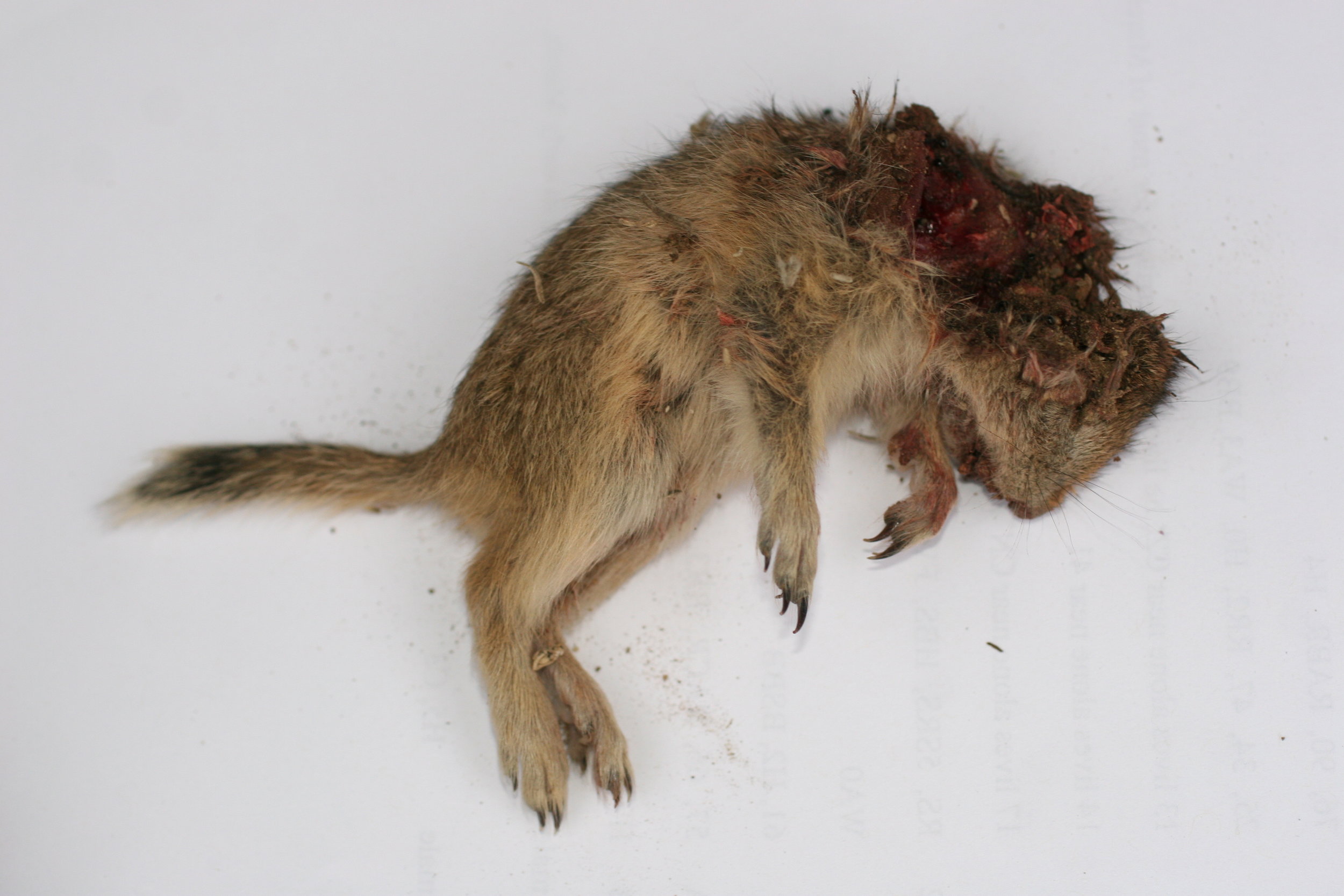INTERSPECIFIC KILLING
The white-tailed Prairie dog kills
Wyoming Ground Squirrels
In March of 2016, National Geographic featured an article detailing John's discovery of white-tailed prairie dogs (WTPDs) in the Arapaho National Wildlife Refuge, Colorado, attacking and killing Wyoming ground squirrels (Urocitellus elegans). This interspecific (between different species) killing had never been observed before in this species, and is the first well-documented research on interspecific killing among herbivores.
It was clear to John and the team during the early stages of their research on WTPDs in Arapaho (conducted from 2007-2012) that there was competition between the prairie dogs and the Wyoming ground squirrels. Chases and fights were not uncommon, with the aggressor typically being a prairie dog unhappy with a ground squirrel entering her territory (most aggressors were lactating female prairie dogs). It did not take long before John and the team realized the hostilities were often escalating into fatal encounters.
Like white-tailed prairie dogs, Wyoming ground squirrels are burrowing, colonial, diurnal, and herbivorous rodents. Where their ranges overlap, prairie dogs and ground squirrels share habitat and coexist in nearby or adjacent territories. Often they are difficult to tell apart, especially as babies, but as adults Wyoming ground squirrels are approximately half the size of their prairie dog cousins, weighing up to 500 grams as compared to the WTPD's 1100 gram max.
















John and colleague Charles Brown wrote of their discovery in a groundbreaking 2016 paper for the Royal Society. In it, they discuss the nature of interspecific killing, and explore the motivations and reasons behind what they observed among WTPDs and Wyoming ground squirrels in Arapaho. From 2007-2012, John and the squad observed 101 killings of ground squirrels by WTPDs. Aggressive lactating females were responsible for 79% of those killings. No murders of prairie dogs by ground squirrels were documented during that time. Unlike the murder of conspecific prairie dog offspring (see our INFANTICIDE page), the killing of a ground squirrels was not typically followed by consumption of the carcass (although a small amount of consumption occasionally occurred). Evidence showed, however, that the overall fitness (survivorship and number of offspring) of the killer prairie dog was greater than it was for non-killers. This is attributed to the decrease in competition for forage, showing that the two species' needs and competition for resources are significant where they share habitat. Being closely related to prairie dogs, and exhibiting much of the same niche behaviors, Wyoming ground squirrels and their offspring compete with prairie dogs for forage and territory, two key resources for suitable habitat. Competition for these resources compromises each species' ability to thrive, reproduce, and sustain generations of a population in the same area.
